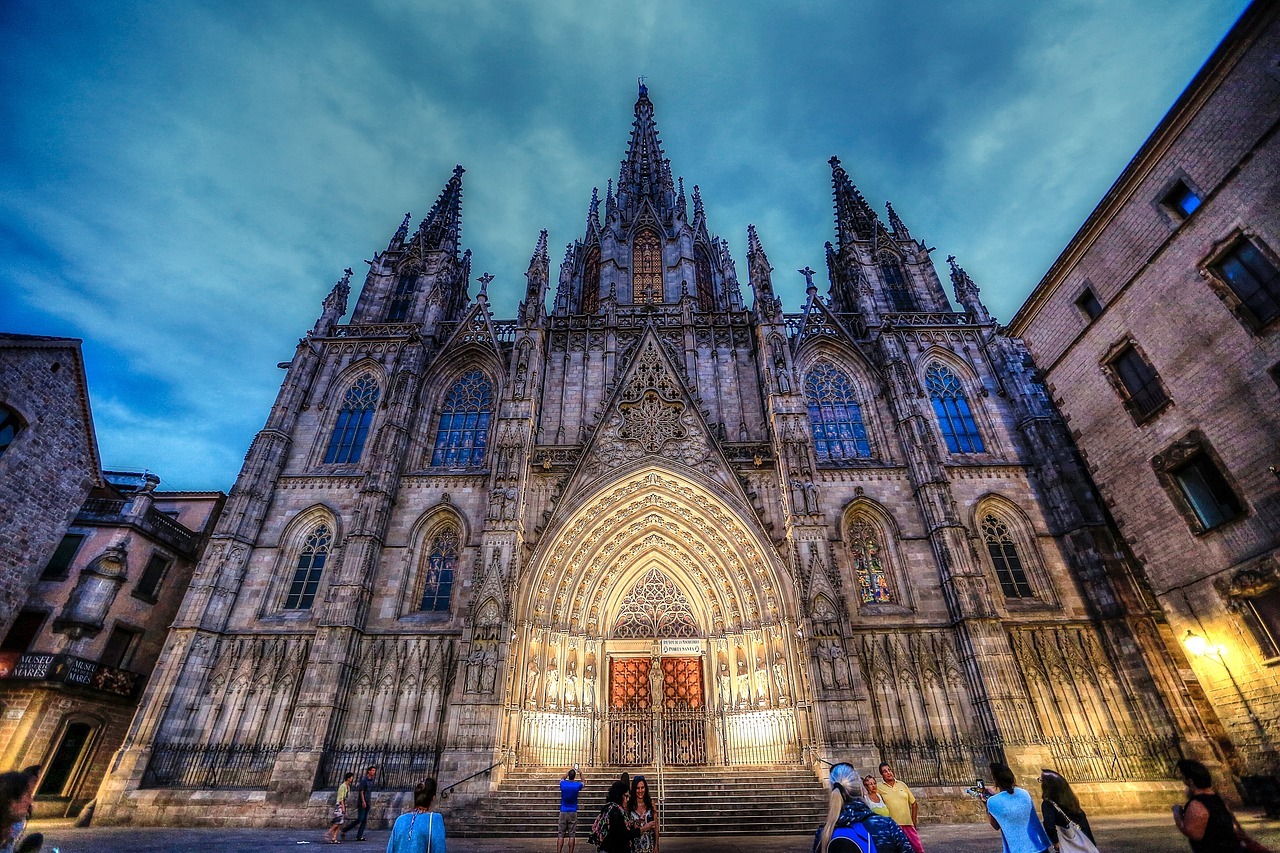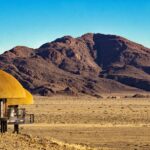Spain Guide
Spain needs no introduction, and whether for its beaches, its lifestyle or its landscapes, every traveler will find what they are looking for.
Located in the Iberian Peninsula, Spain is a mixed country due to its geographical location, which has influenced its culture. While Europe certainly plays a very important role in Spanish civilization, its proximity to Africa , particularly the countries in the north of the continent, should not be overlooked.
Rich in history, Spain is full of Roman remains and traces left by the Arab-Muslim conquest. Under Catholic influence, the Spanish monarchy survives to this day. The various revolutions have enriched the country’s history. Currently, Spain is the 2nd most visited country in Europe , and this, for various reasons. Located in the south of Europe , the Kingdom of Spain has several particularities compared to other European countries.
A brief historical reminder of the Kingdom of Spain
The first millennium was marked by the domination of the Visigoths and then by the Arab-Muslim dynasties. The latter gave rise to the Reconquista which symbolically began in 722. This was followed by the Union of the Crowns of Aragon and Castile in 1469, then the First Spanish Republic in 1873, the Civil War from 1936 to 1939, not forgetting the Francoist period from 1935 to 1975 to arrive at the Spanish Constitution of 1978.
However, before the so-called contemporary period, Spain experienced several conquests during Antiquity , including Roman hegemony that encompassed all of Europe as far as Africa . There was also the Arab conquest and the alliance with the Papacy, allowing Spain to be a colonial power, especially in Latin America.
Understanding Spanish Politics
Since its 1978 constitution, Spain has been a constitutional monarchy. Generally, the prime minister governs the country, while the sovereign has only a ceremonial role.
The Cortes Generales is the legislative branch, along with the Senate and the Congress of Deputies. The judiciary is an authority composed of the Supreme Court, which organizes the country’s judicial administration. Finally, Spain is made up of 17 autonomous communities.
Description of Spain
Capital : Madrid
Official language : Spanish
Population : 47 000 000
National anthem : Royal March
National holiday : October 12
Currency : Euro
Bordering countries : France , Portugal , Morocco
Why visit Spain?
There are plenty of good reasons to visit Spain . In fact, there are just a few, and here are a few examples.
Go for tapas and wineries
Who doesn’t know tapas? These delicious bites can be served as an appetizer, starter, or even a main course. It’s an institution in Spain , where every self-respecting person must visit tapas bars and bodegas. The latter are wine cellars. Whether you’re a wine lover, oenologist, or gourmet, these places are a must-see.
An incredible cultural wealth
Spanish civilization is so rich and has been, throughout its history, an example of cultural coexistence. You can encounter several influences in these regions, including Jewish, Catholic, and Muslim, with places of worship, fortresses, and castles.
Parties!
On the one hand, Spain preserves its folk traditions through its cultures. It is the country with the most festivals in Europe , such as Semana Granda and Sanfermines.
Finally, nightlife is plentiful, especially in bars and nightclubs! In short, a country that knows how to party!
Traditional dishes and regional characteristics
Meals vary in each region, including the country’s various typical dishes, such as Catalan charcuterie and Galician seafood.
Diverse landscapes and heritage
As for the landscapes, one cannot be indifferent to the Pyrenees mountains , the Way of St. James and the sunny beaches. Even more important is the built heritage with monasteries, palaces and other archaeological sites.
Tourist activities in Spain
Spain is a major tourist destination. It’s also the second country in the world with the most UNESCO World Heritage sites. Added to this are the many activities that appeal to the whole family, groups of friends, and even couples in romantic spots.
Places to visit in Spain
A lifetime might not be enough to see everything. However, there are some must-sees that are best not to be missed. If you want to explore the country in a few days, here are the must-sees during your visits and some lesser-known but equally beautiful places:
The Andalusian Trilogy
These are, of course, Granada , Seville , and Cordoba . The last cities in Al-Andalus to have resisted the Reconquista , they have preserved splendid buildings, palaces, mosques, and gardens in the Hispano-Moorish style. Strolling through their narrow streets is a delight. Finally, these are the birthplaces of flamenco, a demonstration of which should not be missed.
Barcelona
It is the second largest city in Spain after Madrid , and it is also the most populated, as it is the most industrialized. In addition to its economic assets, it is a city that has a special charm with its party atmosphere and art nouveau architecture. Among the most famous visits in Barcelona are Park Güell and especially the Sagrada Familia . In short, an ideal city for those who like to party!
Madrid, the capital
The capital is no exception, as in addition to being the administrative center of Spain, it is home to the Royal Palace, the Prado Museum , and El Retiro Park. In addition, there are various tourist attractions, restaurants in the city center, and lively bars.
Several cities such as Las Palmas, Toledo, Bilbao, Valencia, Palma de Mallorca, Cordoba, Seville and La Rioja are among the must-sees in Spain.
The coast of Asturias
With its small fishing villages and beaches nestled among rugged cliffs, Asturias is one of the most beautiful coastlines in Spain . In fact, it is said to be home to the most beautiful beach in the country. It is Playa del Silencio . This is a region not to be missed if you love the sea air.
La Carmona
A city steeped in history, small indeed, but whose population has preserved the vestiges of the past, dating back to the first century. Considered the leading Andalusian city in terms of heritage, it is renowned for its Baroque palaces, medieval gates, and Moorish fortresses. After your visits, you can enjoy tapas in the city’s characteristic stalls.
The pilgrimage to Santiago de Compostela
By following the marked trails, you can follow the path to discover Santiago de Compostela, a popular destination for Catholics seeking the blessings of this saint. However, ordinary tourists take this route to better understand the history and discover the architectural achievements of the Middle Ages through these journeys.
The archipelagos
Spain has several archipelagos within its borders that are pure paradise.
Among them, we must obviously mention the Canaries with Lanzarote and its unreal landscapes as if from another galaxy.
The Balearic Islands, with their steep coves and charming little villages, also make great holiday destinations.
Finally, less well-known, but just as beautiful, are the Cies Islands off the coast of Galicia , the most famous of which is San Martino with its tropical air.
Zaragoza and its medieval city
The capital of Aragon , rich in history, this city is located near Catalonia . It is known for its buildings with imposing architecture. The most famous of these is the Basilica of Our Lady of the Pillar , which overlooks the river. A good opportunity to admire it might be to travel the Ebro by canoe for a more original panorama.
Monte Perdido and Ordesa National Park
In the heart of the Pyrenees , the 4 Valleys are among the wonders to be seen by hikers. The park is one of the most beautiful mountain landscapes in Europe between glacial valleys, deep canyons and waterfalls.
Segovia
This city is located northeast of Madrid , the capital. It is famous for its Gothic cathedral and its royal palace, which legend has it inspired Walt Disney. The Romanesque churches and other medieval walls are also worth a visit. As is the Roman aqueduct, whose 160 arches cross the city.
The Sierra Nevada
Considered the most popular site in Spain , especially in winter, these snow-capped mountains particularly attract ski and extreme sports enthusiasts, not only from Spain , but from all over Europe .
Now a national park, the Sierra Nevada boasts unique flora and fauna. At its foot lies Las Alpujarras , with its whitewashed houses, hot springs, and Serrano ham producers.
San Sebastian
This city is located not far from Bilbao , in the Basque Country. In addition to its fine sandy beaches, it is renowned for the highly sophisticated architecture of its monuments. This city also offers you the opportunity to taste the region’s specialties such as pinxtos, as well as other Basque gastronomic specialties.
How to visit Spain?
Boat, plane, car or train, all means are good for visiting Spain . In addition, the interior of the country has extensive networks accessible to all, reaching small villages and the most remote parts of the country.
By plane
Spain has several international airports that serve hundreds of cities around the world. As a bonus, the country is connected by numerous low-cost airlines, including Iberia, Air Europa, Air Nostrum, Ryanair, Vueling, and Albastair .
By train
The railway network covers the entire country, especially with the TGV (high-speed train). These trains can travel up to 300 km per hour, connecting major cities like Barcelona to Madrid . This is, in fact, the most popular and interesting means of transport for the Spanish . In addition, there are tourist trains that cross the entire country at a pleasant pace.
Good to know: Land transportation prices in Spain are quite unusual. Short distances are affordable, while long journeys are slightly more expensive compared to other European countries.
The subways
As for the metro, several Spanish cities have them and they even serve the suburbs. This is the case in Malaga , Seville , Barcelona and Madrid . Regarding the latter, it has the oldest line that serves several locations, not to mention the trams in the city center.
Buses
Buses are renowned for their comfort, reliability, and, above all, their very attractive prices. It’s worth noting that buses in major cities have every comfort, while those in remote areas are more rustic. Nevertheless, local authorities are making considerable efforts to replace the old ones while modernizing this transport system. This is particularly the case with the possibility of purchasing tickets online, the installation of ATMs, and the remote booking system.
Taxis
Spanish taxis are ubiquitous in major cities, offering comfort and professionalism during every journey. Furthermore, they are perfectly organized, ensuring perfect traceability of journeys, thus facilitating procedures in case of problems.
Good to know: Uber has been operating in Spain for several years, and competition with taxis is fierce. To save money and enjoy a more comfortable ride, opt for carpooling services to reduce costs.
Weather and climate in Spain
Spain is a sub-Mediterranean country with a warm climate compared to the rest of Europe . Its proximity to Africa , especially Morocco , contributes to the warm climate in the south. Between Spanish cities, you can see several temperature variations with different climates, ranging from very favorable to very unfavorable.
In Spain, each region has its own climate. Therefore, before traveling to a particular city, you should check the weather forecast. Generally, climatic influences depend on the Mediterranean regions, with relatively little rainfall in the off-season. In the center, the climate is continental, resulting in fairly harsh winters. On the Atlantic coast , autumns are rainy and temperatures are milder year-round.
Most importantly, there are sudden temperature changes in autumn and spring, which is quite difficult for travel on the coast and near mountains. However, these temperature changes are exceptional.
When to go to Spain?
Ideally, the best time to visit the north of the country is summer. For the south, especially Andalusia , it is best to avoid it if you cannot stand the extreme heat. In this case, spring and September are the best times. This way, you will be able to visit everything and, above all, enjoy all the activities, whether on land or by sea.
Good to know: Some popular tourist sites can only be visited by reservation, sometimes several weeks or even months in advance. This is the case with the Alhambra , for example.
Clothes to take to Spain
How to pack your bags before going to Spain?
Spain boasts several kilometers of coastline, ideal for your summer vacation. So, don’t forget your sunscreen and moisturizer, shorts and Bermuda shorts, flip-flops and bikinis, as well as little dresses. In the off-season, it’s best to bring warm clothes, jackets, and hiking boots.
Good to know and unusual things in Spain
Finally, here are some curiosities that are worth discovering when visiting this country:
The Valley of the Fallen with its basilica and 30,000 soldiers buried there in Madrid ,
The Caminito del Rey and its footbridge between two rocks at an altitude of 100 meters,
The Tabernas Desert , which is the Spanish Far West,
Le Setenil de Las Bodegas and Museo Atlantico Lanzarote in the Canary Islands,
The Tomatina festival , a tomato fight that takes place every year in Buñol
La Limitezero, a zip line that connects Spain to Portugal , the Restaurante el Diablo in Lanzarote with meals cooked using the heat of the volcano and the Rio Tinto Mine, the largest and oldest in Europe.





